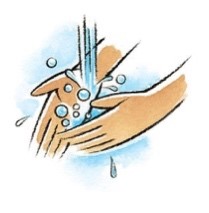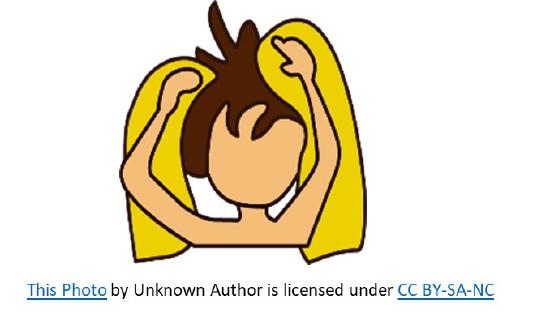5.8: Putting it Together - La familia, la comida y las fiestas
- Page ID
- 272850
\( \newcommand{\vecs}[1]{\overset { \scriptstyle \rightharpoonup} {\mathbf{#1}} } \)
\( \newcommand{\vecd}[1]{\overset{-\!-\!\rightharpoonup}{\vphantom{a}\smash {#1}}} \)
\( \newcommand{\id}{\mathrm{id}}\) \( \newcommand{\Span}{\mathrm{span}}\)
( \newcommand{\kernel}{\mathrm{null}\,}\) \( \newcommand{\range}{\mathrm{range}\,}\)
\( \newcommand{\RealPart}{\mathrm{Re}}\) \( \newcommand{\ImaginaryPart}{\mathrm{Im}}\)
\( \newcommand{\Argument}{\mathrm{Arg}}\) \( \newcommand{\norm}[1]{\| #1 \|}\)
\( \newcommand{\inner}[2]{\langle #1, #2 \rangle}\)
\( \newcommand{\Span}{\mathrm{span}}\)
\( \newcommand{\id}{\mathrm{id}}\)
\( \newcommand{\Span}{\mathrm{span}}\)
\( \newcommand{\kernel}{\mathrm{null}\,}\)
\( \newcommand{\range}{\mathrm{range}\,}\)
\( \newcommand{\RealPart}{\mathrm{Re}}\)
\( \newcommand{\ImaginaryPart}{\mathrm{Im}}\)
\( \newcommand{\Argument}{\mathrm{Arg}}\)
\( \newcommand{\norm}[1]{\| #1 \|}\)
\( \newcommand{\inner}[2]{\langle #1, #2 \rangle}\)
\( \newcommand{\Span}{\mathrm{span}}\) \( \newcommand{\AA}{\unicode[.8,0]{x212B}}\)
\( \newcommand{\vectorA}[1]{\vec{#1}} % arrow\)
\( \newcommand{\vectorAt}[1]{\vec{\text{#1}}} % arrow\)
\( \newcommand{\vectorB}[1]{\overset { \scriptstyle \rightharpoonup} {\mathbf{#1}} } \)
\( \newcommand{\vectorC}[1]{\textbf{#1}} \)
\( \newcommand{\vectorD}[1]{\overrightarrow{#1}} \)
\( \newcommand{\vectorDt}[1]{\overrightarrow{\text{#1}}} \)
\( \newcommand{\vectE}[1]{\overset{-\!-\!\rightharpoonup}{\vphantom{a}\smash{\mathbf {#1}}}} \)
\( \newcommand{\vecs}[1]{\overset { \scriptstyle \rightharpoonup} {\mathbf{#1}} } \)
\( \newcommand{\vecd}[1]{\overset{-\!-\!\rightharpoonup}{\vphantom{a}\smash {#1}}} \)
\(\newcommand{\avec}{\mathbf a}\) \(\newcommand{\bvec}{\mathbf b}\) \(\newcommand{\cvec}{\mathbf c}\) \(\newcommand{\dvec}{\mathbf d}\) \(\newcommand{\dtil}{\widetilde{\mathbf d}}\) \(\newcommand{\evec}{\mathbf e}\) \(\newcommand{\fvec}{\mathbf f}\) \(\newcommand{\nvec}{\mathbf n}\) \(\newcommand{\pvec}{\mathbf p}\) \(\newcommand{\qvec}{\mathbf q}\) \(\newcommand{\svec}{\mathbf s}\) \(\newcommand{\tvec}{\mathbf t}\) \(\newcommand{\uvec}{\mathbf u}\) \(\newcommand{\vvec}{\mathbf v}\) \(\newcommand{\wvec}{\mathbf w}\) \(\newcommand{\xvec}{\mathbf x}\) \(\newcommand{\yvec}{\mathbf y}\) \(\newcommand{\zvec}{\mathbf z}\) \(\newcommand{\rvec}{\mathbf r}\) \(\newcommand{\mvec}{\mathbf m}\) \(\newcommand{\zerovec}{\mathbf 0}\) \(\newcommand{\onevec}{\mathbf 1}\) \(\newcommand{\real}{\mathbb R}\) \(\newcommand{\twovec}[2]{\left[\begin{array}{r}#1 \\ #2 \end{array}\right]}\) \(\newcommand{\ctwovec}[2]{\left[\begin{array}{c}#1 \\ #2 \end{array}\right]}\) \(\newcommand{\threevec}[3]{\left[\begin{array}{r}#1 \\ #2 \\ #3 \end{array}\right]}\) \(\newcommand{\cthreevec}[3]{\left[\begin{array}{c}#1 \\ #2 \\ #3 \end{array}\right]}\) \(\newcommand{\fourvec}[4]{\left[\begin{array}{r}#1 \\ #2 \\ #3 \\ #4 \end{array}\right]}\) \(\newcommand{\cfourvec}[4]{\left[\begin{array}{c}#1 \\ #2 \\ #3 \\ #4 \end{array}\right]}\) \(\newcommand{\fivevec}[5]{\left[\begin{array}{r}#1 \\ #2 \\ #3 \\ #4 \\ #5 \\ \end{array}\right]}\) \(\newcommand{\cfivevec}[5]{\left[\begin{array}{c}#1 \\ #2 \\ #3 \\ #4 \\ #5 \\ \end{array}\right]}\) \(\newcommand{\mattwo}[4]{\left[\begin{array}{rr}#1 \amp #2 \\ #3 \amp #4 \\ \end{array}\right]}\) \(\newcommand{\laspan}[1]{\text{Span}\{#1\}}\) \(\newcommand{\bcal}{\cal B}\) \(\newcommand{\ccal}{\cal C}\) \(\newcommand{\scal}{\cal S}\) \(\newcommand{\wcal}{\cal W}\) \(\newcommand{\ecal}{\cal E}\) \(\newcommand{\coords}[2]{\left\{#1\right\}_{#2}}\) \(\newcommand{\gray}[1]{\color{gray}{#1}}\) \(\newcommand{\lgray}[1]{\color{lightgray}{#1}}\) \(\newcommand{\rank}{\operatorname{rank}}\) \(\newcommand{\row}{\text{Row}}\) \(\newcommand{\col}{\text{Col}}\) \(\renewcommand{\row}{\text{Row}}\) \(\newcommand{\nul}{\text{Nul}}\) \(\newcommand{\var}{\text{Var}}\) \(\newcommand{\corr}{\text{corr}}\) \(\newcommand{\len}[1]{\left|#1\right|}\) \(\newcommand{\bbar}{\overline{\bvec}}\) \(\newcommand{\bhat}{\widehat{\bvec}}\) \(\newcommand{\bperp}{\bvec^\perp}\) \(\newcommand{\xhat}{\widehat{\xvec}}\) \(\newcommand{\vhat}{\widehat{\vvec}}\) \(\newcommand{\uhat}{\widehat{\uvec}}\) \(\newcommand{\what}{\widehat{\wvec}}\) \(\newcommand{\Sighat}{\widehat{\Sigma}}\) \(\newcommand{\lt}{<}\) \(\newcommand{\gt}{>}\) \(\newcommand{\amp}{&}\) \(\definecolor{fillinmathshade}{gray}{0.9}\)See below for a review summary of what you have learned this chapter to help you prepare for the assessment to demonstrate your mastery of the objectives.
- Vocabulario - La familia
-
La familia
- el abuelo / la abuela (grandfather / grandmother)
- el esposo / la esposa (husband / wife)
- el hermano / la hermana (brother / sister)
- el hijo / la hija (son / daughter)
- la madre, mamá (mother, mom)
- el nieto / La nieta (grandson / granddaughter)
- el novio / La novia (boyfriend / girlfriend)
- el padre, papá (father, dad)
- la pareja (couple)
- el pariente (relative)
- el primo / La prima (cousin)
- el sobrino / la sobrina (nephew / niece)
- el tío / la tía (uncle / aunt)
- la cuñada / el cuñado (sister-in-law / brother-in-law)
- los medio hermanos / el medio hermano/ la media hermana (half-siblings / half-brother / half-sister)
- los hermanastros / el hermanastro / la hermanastra (stepsiblings / stepbrother / stepsister)
- el hijastro / la hijastra (stepson / stepdaughter)
- ea madrastra / el padrastro (stepmother / stepfather)
- la suegra / el suegro (mother-in-law / father-in-law)
Tipos de familias:
- familia nuclear o pequeña
- familia extendida o grande
- primera (first), segunda (second), tercera (third) generación
- la familia política
- la familia moderna
- la familia tradicional
Mascotas
- el conejo (rabbit, bunny)
- el cuy (guinea pig)
- el gato / la gata (cat)
- el pájaro (bird)
- el perro / la perra (dog)
- el pez (fish)
- la tortuga (turtle)
- Los posesivos
-
Posesión con ser + de
There are two ways to indicate possession in Spanish. As you may recall from chapter 1, one way is to use the verb ser in the following pattern: object(s) + ser de + person who has the object(s).
- La mochila es de Joaquín. (The backpack is Joaquín's.)
- Los cuadernos son de los estudiantes. (The notebooks are the students'.)
Los adjetivos posesivos
A more common way to express possession, especially when it is clear to whom something belongs, is to use possessive adjectives:
singular possessor plural possessor mi (my) nuestro (our) tu (your) vuestro (your) su (his, her, your) su (their, your)
- Vocabulario - La comida
-
Frutas
- el durazno (peach)
- la fresa (strawberry)
- la manzana (apple)
- el melón (cantaloupe, melon)
- la naranja (orange)
- la piña (pineapple)
- la banana (banana)
- la sandía (watermelon)
- las uvas (grapes)
Verduras (vegetables)
- el brócoli (broccoli)
- la cebolla (onion)
- la ensalada (salad)
- la lechuga (lettuce)
- el maíz (corn, maize)
- el pepino (cucumber)
- el tomate (tomato)
- la zanahoria (carrot)
Carbohidratos
- el arroz (rice)
- el azúcar (sugar)
- el cereal (cereal)
- los frijoles (beans)
- el pan (bread)
- las papas, las patatas (potatoes)
Proteínas, grasas y productos lácteos
- el camarón (shrimp)
- la carne (meat)
- la crema (cream)
- el huevo (egg)
- la mantequilla (butter)
- el pavo (turkey)
- el pescado (fish)
- el pollo (chicken)
- el queso (cheese)
- el tocino (bacon)
- el yogur (yogurt)
Condimentos
- la salsa de tomate (ketchup)
- la mayonesa (mayonnaise)
- la mostaza (mustard)
- el pepinillo (pickle)
- la pimienta (pepper [black pepper])
- la sal (salt)
- la salsa picante (hot/spicy sauce)
Bebidas (drinks)
- la cerveza (beer)
- el jugo (LatAm), el zumo (Spain) (juice)
- la leche (milk)
- el refresco (soda, pop)
- el vino tinto ([red] wine)
- el vino blanco ([white] wine)
Postres (desserts)
- el flan (flan, custard)
- el helado (ice cream)
- las galletas (cookies)
- el pastel (cake, pie)
Platos (dishes)
- las arepas (corn flour fritters)
- el jamón ibérico (Iberian ham)
- la parrillada (barbecued meat)
- la pupusa (thick griddle cake or flatbread made with cornmeal or rice flour from El Salvador, Honduras, Nicaragua, and Guatemala)
Utensilios
- la copa (wine glass)
- la cuchara (spoon)
- el cuchillo (knife)
- la olla (pot)
- el plato (plate)
- la servilleta (napkin)
- la taza (coffee or tea cup)
- el tenedor (fork)
- el vaso (water glass)
Comidas (meals)
- el desayuno (breakfast)
- el almuerzo (lunch)
- la merienda (snack)
- la cena (dinner, supper)
- Vocabulario - Celebraciones tradicionales
-
Palabras asociadas con tradiciones y celebraciones tradicionales
- los antepasados (ancestors)
- El Año Nuevo (New Year’s)
- las artesanías (handicrafts)
- El carnaval (Carnival)
- la cocina (cuisine)
- la costumbre (habit, tradition, custom)
- la creencia (belief)
- el desfile (parade)
- El Día de los Muertos (Day of the Dead)
- El día de Independencia (Independence Day)
- El Día de San Patricio (Saint Patrick’s Day)
- la fiesta / el día feriado (holiday)
- el folclor (folklore)
- el hábito (habit)
- la herencia cultural (cultural heritage)
- la identidad (identity)
- El Janucá (Hanukkah)
- el legado (legacy)
- el nacionalismo (nationalism)
- La Navidad (Christmas)
- La Noche de las Brujas (Halloween)
- la ofrenda (offering / altar)
- La Pascua (Easter)
- la práctica (practice)
- el pueblo (people)
- las relaciones (relationships)
- el valor (value)
Verbos
- conmemorar (to commemorate)
- disfrazarse (to wear a disguise or costume)
- festejar (to celebrate)
- heredar (to inherit)
- recordar (to remember)
- respetar (to respect)
- Vocabulario - Enfermedad y salud
-
Las enfermedades comunes y condiciones delicadas de salud del diario vivir
- la gripa o la gripe (flu)
- la tos (cough)
- la fiebre (fever)
- la infección (infection)
- el golpe (The hit)
- la hinchazón (swelling)
- la raspadura (scrape)
- la herida (wound)
- la alergia (allergy)
- el dolor de estómago (stomach pain)
- la cicatriz (scar)
- Algunos verbos usados en el tema de la salud.
- romperse un hueso (break a bone)
- torcerse un músculo/un tendón (strain a muscle/tendon)
- lastimarse (to injure oneself)
- desmayarse (to faint)
- toser (to cough)
- recuperarse (to recuperate)
- doler (o < ue) (to hurt; similar usage as “gustar”, e.g. A José le duelen los pies = José’s feet hurt.)
Condiciones físicas y psicológicas de cuidado
- estar embarazada (be pregnant)
- tener síntomas de… (have symptoms of…)
- tener un dolor de muela (to have a toothache)
- estar mareado/a (to be dizzy)
En el consultorio médico y las emergencias en el hospital
- el ataque al corazón (heart attack)
- la silla de ruedas (wheelchair)
- la receta médica (prescription)
- la vacuna (vaccine)
- el antibiótico (antibiotic)
- la pastilla (pills)
- el grado de temperatura (degree of temperature)
- el cirujano/ la cirujana (surgeon)
- el especialista (specialist)
- el enfermero / la enfermera (nurse)
- Verbos Reflexivos
-
In Spanish, to talk about some of the actions that describe daily routine or personal care (getting up, taking a shower, getting dressed, etc.), we use reflexive verbs. The pronoun "se" (in blue) attached to an infinitive verb (levantarse, peinarse, despertarse…), indicates that a verb is reflexive.
Conjugation
Reflexive verbs require reflexive pronouns to indicate that the subject of the sentence receives the action of the verb (oneself): me, te, se, nos, os, se. The reflexive pronoun and the conjugation ending must agree. Analyze the conjugations below paying special attention to the reflexive pronouns and conjugation endings in blue.
despertarse (e:ie) vestirse (e:i)


me despierto nos despertamos me visto nos vestimoste despiertas os despertáis te vistes os vestís
se despierta se despiertan se viste se visten
Note: Reflexive verbs can be conjugated in any other tense. For example, the same verbs above in the preterite tense would be:
me desperté nos despertamos me vestí nos vestimos
te despertaste os despertasteis te vestiste os vestisteis
se despertó se despertaron se vistió se vistieron
Both the verb ending and the reflexive pronoun agree with the subject.


Yo me pongo los zapatos. Vosotros os despertáis temprano.I put on my shoes (myself). You (all) wake up early (yourselves).
¡Ojo!: Unlike English, parts of the body or clothing are not used with the possessive pronouns, instead, use definite or indefinite articles instead.
Common reflexive verbs
In the chart below, the "se" ending in blue indicates that the verb is reflexive.
Verbo Inglés Verbo Inglés acordarse (de) (o:ue) to remember llamarse to be named acostarse (o:ue) to go to bed maquillarse to put on makeup afeitarse to shave peinarse to comb one's hair bañarse to bathe; to take a bath ponerse (+noun) to put on (+item) cepillarse (los dientes, el pelo) to brush (one's teeth, hair) ponerse (+adj.) to become (+adj.) despertarse (e:ie) to wake up probarse (o:ue) to try on dormirse (o:ue) to fall asleep quedarse to remain; to stay ducharse to take a shower quitarse to take off (something) enojarse to get angry secarse (las manos, el pelo) to dry (one's hands, one's hair) irse to go away; to leave sentarse (e:ie) to sit down lavarse (las manos, el pelo) to wash (one's hands, hair) sentirse (e:ie) to feel levantarse to get up vestirse (e:i) to get dressed ¡Ojo!: Many of the reflexive verbs can be also used as a non-reflexive verb. The meaning will change. Study the following pairs of sentences and the change in meaning created by the addition of the reflexive pronouns. In the example below, non-reflexive verbs are indicated in bold, and the reflexive verbs are in bold with the reflexive pronouns and conjugation endings in blue.

Carlos lava su coche.
Carlos washes his car.

Yo le seco el pelo a Helga.
I dry Helga's hair.

Carlos se lava las manos.
Carlos washes his hands.

Yo me seco el pelo.
I dry my hair.
- Verbos reflexivos de emoción y verbos recíprocos
-
Verbos reflexivos de emoción
in reflexive verbs the subject does the action to him/her/itself. But there are some reflexive verbs in Spanish that use the reflexive pronoun to show how one is feeling, especially the onset of an emotional or physical state. These are often expressed in English with “to get” + adjective; be very careful not to translate such English idioms literally! Use the reflexive verb instead. Below are common reflexive emotional verbs and their non-reflexive (transitive) forms for comparison:
Forma reflexiva Forma no reflexiva aburrirse (to get bored) aburrir (to bore someone) alegrarse (to become happy) alegrar (to make someone happy) asustarse (to get scared) asustar (to frighten someone) calmarse (to calm oneself down) calmar (to calm someone down) cansarse (to get tired) cansar (to tire someone out) casarse con (to get married) casar (to perform a marriage for someone) divertirse (to have a good time) divertir (to entertain someone) enojarse (to get angry) enojar (to make someone angry) frustrarse (to get frustrated) frustrar (to frustrate someone) sorprenderse (to get surprised) sorprender (to surprise someone) sentirse (e>ie) (to feel, have a feeling) sentir (to feel something) List of Common Reciprocal Verbs
- abrazarse (to hug each other)
- amarse (to love each other)
- ayudarse (to help each other)
- besarse (to kiss each other)
- casarse (to marry each other)
- conocerse (to know each other)
- despedirse (to say goodbye to each other)
- divorciarse (to divorce each other)
- mirarse (to look at each other)
- pelearse (to fight with each other)
- reunirse (to get together)
- turnarse (to take turns)
Contributors and Attributions
- 5.19: Putting It Together- ¿Quiénes son los miembros de una familia? by Erica Brown, Alejandra Escudero, María Cristina Montoya, & Elizabeth Small is licensed CC BY 4.0. Original source: https://courses.lumenlearning.com/wm-spanish1-2
- 2.16: Putting It Together- Mente sana en cuerpo sano by Erica Brown, Alejandra Escudero, María Cristina Montoya, & Elizabeth Small is licensed CC BY 4.0. Original source: https://lumenlearning.com/courses/introductory-spanish-ii/
- 6.4: Los verbos reflexivos by M. Barrio De Mendoza, K Gutiérrez, H.Ho, C. Lin, & A Stere Lugo is licensed CC BY-NC 4.0. Original source: https://human.libretexts.org/Bookshelves/Languages/Spanish/Naveguemos_juntos_(Mendoza_Gutierrez_Ho_Lin_and_Lugo)/06%3A_Capitulo_6-_La_rutina_diaria/6.04%3A_Los_verbos_reflexivos
- Remixed by Karen Le Cornet. License: CC BY: Attribution

